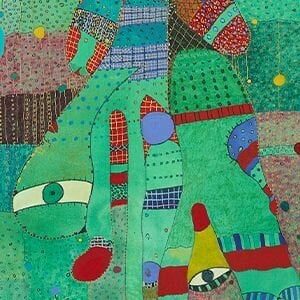


Last updated on Sun 23 September, 2018


Summer Nocturne: Works on Paper from the 1970s
June 10, 2018 -
September 23, 2018
Summer Nocturne: Works on Paper from the 1970s is inspired by several large works on paper from the Museum’s permanent collection. The exhibition title is borrowed from one of these works: a nearly 8-foot tall, multilayered construction by Richard Dunlap, a multidisciplinary artist whose interactive installations and performances of the 1970s embraced improvisation. Taking a cue from Dunlap’s work, the exhibition eschews a central narrative or subject, instead leaping intuitively across a decade that witnessed a multitude of converging artistic influences.
Works in Summer Nocturne range in character from the introspective to the participatory, and span in style from the traditional to the experimental. While some evoke a sense of deliberate solitude or introspection, others suggest a more open sense of participation and play. Most are pushing the boundaries posed by artistic styles and movements prevalent in the decade: abstraction, Conceptual art, Earth art, Feminism, Fluxus, illustration, Minimalism, and Performance art.
Indicative of the larger field of art produced in the 1970s, works in the exhibition are products of an era marked by the social events of the late 1960s, a renewed attention to the body, an awakening to the environment, a challenging of authority, the documentation of art and artistic activity, and an investment in the notion of the ephemeral. Re-examined today, these works appear fresh and relevant not just because of the exigency of such issues, but also because they reveal an individualistic commitment to investigation that is in essence timeless.
The exhibition features ten artists: Robert Beauchamp, Huguette Caland, Richard Dunlap, Dane Goodman, Luchita Hurtado, Tom Marioni, Marie Schoeff, Michelle Stuart, Joan Tanner, and John M. White. Most artists were born outside of California but lived there at some point in their careers, some having permanently adopted the Central Coast as home. Most have also been featured in past exhibitions at SBMA, while others are appearing here for the first time.
Join us in our endless discovery of modern and contemporary Arab art